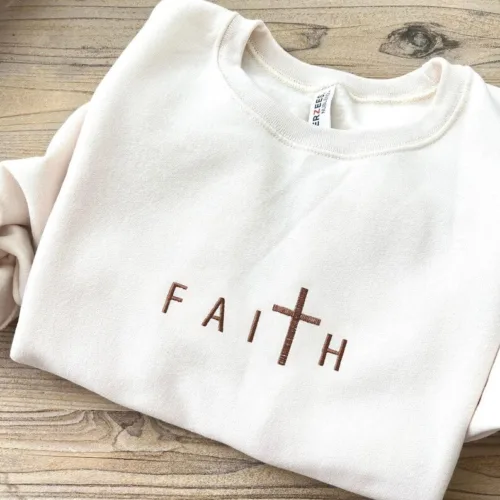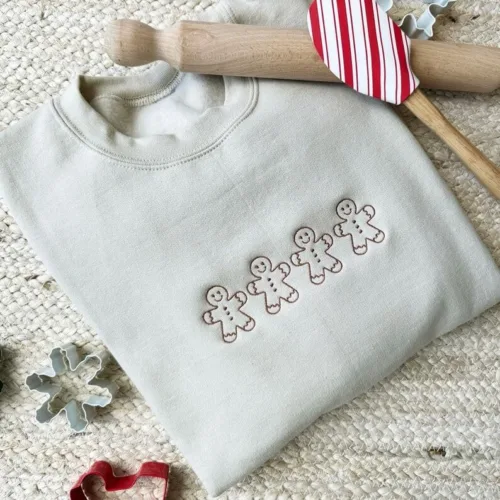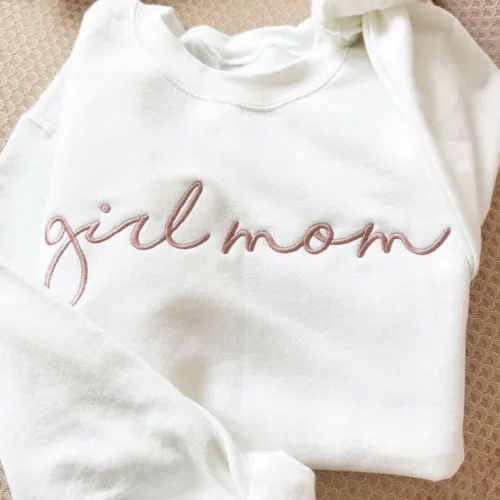The best discounts this week
Every week you can find the best discounts here.
Personalized Embroidered Hat, Custom Text, Custom Logo, Custom Your Image
Personalised Vintage Cap – Custom Embroidered Unisex Cotton Dad Hat with Personalized Text
Personalized Embroidered Cat Hat, Custom Dog Hat, Custom Hat Vintage Baseball
Custom Embroidered FAITH Crewneck Sweatshirt
Gingerbread Men Embroidered Sweatshirt
Girl Mom Personalized Crewneck Sweatshirt
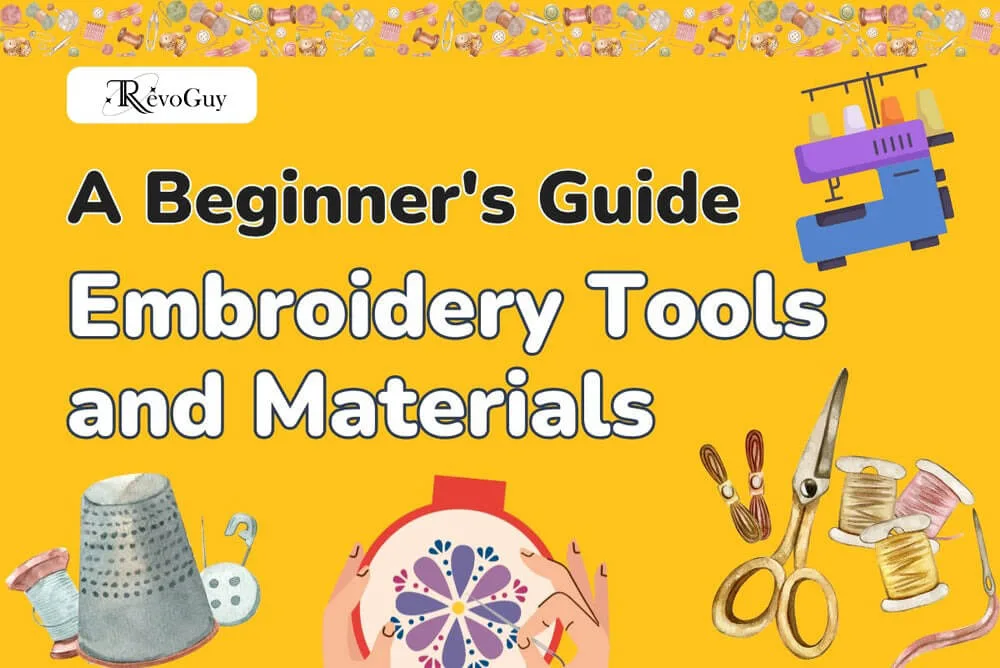
Table of Contents
Artisan Tools Guide
Embroidery, an art form rooted in ancient tradition, still enchants artists and makers with its delicate beauty and endless creative potential. Today, it blends heritage and innovation, allowing both beginners and seasoned embroiderers to express their artistry in vibrant, textured designs.
In this guide, we’ll explore the fundamental tools and materials every embroiderer should know. From needles and hoops to specialty threads and fabrics, you’ll discover the essentials that bring embroidered creations to life—one stitch at a time.
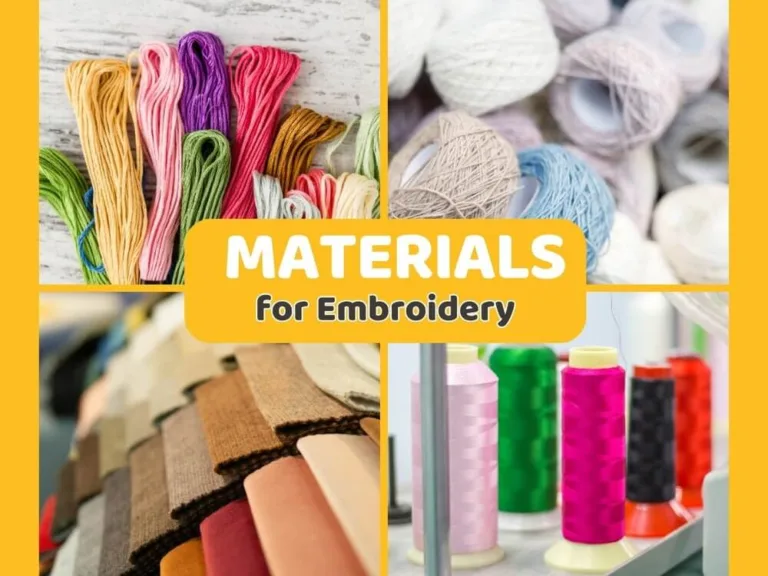
Embroidery Materials Guide
Traditional Stitch Essentials
Fabrics
The fabric you choose lays the foundation for your entire project. Personally, I lean toward natural fibers for their texture and resilience. Cotton, linen, and wool are the tried-and-true heroes of the embroidery world. They handle needlework gracefully and offer a beautiful finish with minimal fuss.Pro Tip: If you’re just starting out, opt for even-weave fabrics like Aida cloth. They make counting stitches easier and help you build confidence before moving on to more complex weaves.Threads and Yarns
Threads might not get all the glory, but they’re absolutely essential. My go-to? Cotton embroidery floss—also called stranded cotton. It’s smooth, easy to work with, and available in just about every shade you can imagine.Feeling bold? Metallic threads are a fun challenge. They shimmer under the light and can transform a simple design into something truly showstopping. Just be ready for a little extra patience—they can be tricky but totally worth it.These foundational materials are where tradition meets creativity. With the right fabric and thread, you’re well on your way to creating embroidery that’s timeless and uniquely yours.
Modern Craft Materials
While traditional materials have their timeless appeal, modern innovations in embroidery supplies have expanded the creative horizon. Here are some contemporary go-tos that bring fresh flair to your work:
- Cotton and Synthetic Blends
Blended fabrics strike a balance between softness and strength. You get the breathability of cotton with the added resilience and wrinkle resistance of synthetic fibers—ideal for everyday projects that need to last.
- Canvas
Thick and dependable, canvas is a favorite for needlepoint and cross-stitch. It holds stitches securely and offers a bold, defined backdrop for complex patterns.
- Rayon Threads
Want a bit of shine? Rayon threads deliver a glossy finish that elevates embroidery from simple to striking. They’re especially great for decorative elements and statement pieces.
- Novelty Yarns
Looking to add a bit of flair? Novelty yarns—think fuzzy, sparkly, or even metallic textures—bring depth and personality to your pieces. They’re excellent for mixed-media or playful designs.
- Ribbon
For stunning dimensional effects, try silk or organza ribbons. Perfect for floral motifs or textural accents, ribbon embroidery creates a sculptural feel that really pops off the fabric.
The materials you choose are more than just tools—they’re part of the art. So go ahead and experiment. Mixing old with new can lead to some truly inspired creations!
Machine Embroidery
When it comes to machine embroidery, your material choices shift slightly from handwork traditions. Here’s what you need to know to set yourself up for smooth stitching and stunning results:
- Rayon Thread: Often considered the gold standard for machine embroidery, rayon offers a gorgeous, silky finish and runs smoothly through machines. It’s a great pick for designs where shine and detail matter.
- Polyester Thread: A reliable alternative to rayon, polyester thread is known for its durability and colorfastness. It’s perfect for garments or items that will go through frequent laundering—like uniforms, towels, or baby clothes.
- Cotton Thread: While beloved in hand embroidery, cotton thread can be a troublemaker in machines. It tends to break under the high-speed stitching, which can cause thread jams or even damage needles. If you do use it, opt for high-quality, machine-rated cotton and stitch at a slower speed.
These are your secret weapons. Without proper support, even the best fabric and thread can lead to puckering, distortion, or misaligned stitches. Whether you choose cut-away, tear-away, or water-soluble stabilizers depends on your project type and fabric.
Selecting the right materials for machine embroidery is like crafting the perfect recipe—each ingredient plays a vital role. With a bit of research and some trial and error, you’ll find the ideal combination for crisp, professional-looking results that truly stand out.
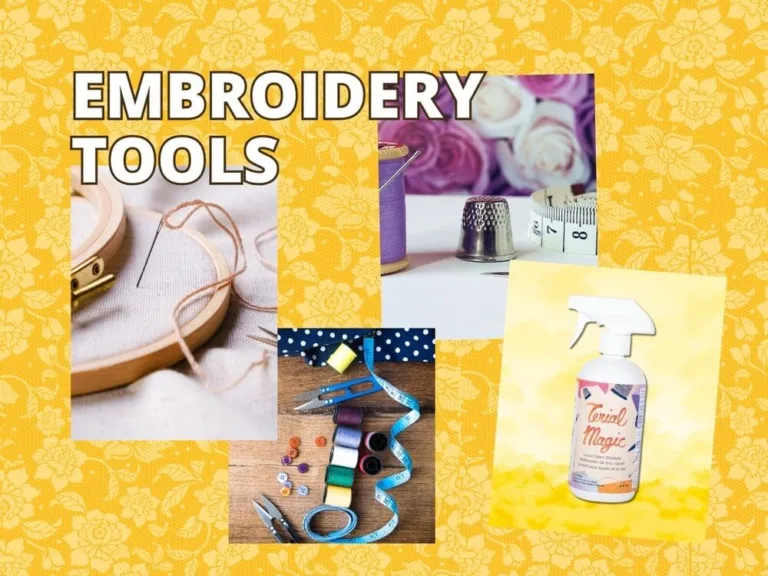
Essential Tools
Basic Tools
These are the essentials you’ll rely on time and time again, whether you’re just starting or you’re working on a complex project:
Needles
Selecting the right needle is like pairing the perfect partner for a dance—the rhythm just clicks. Each needle serves a unique purpose, from the sturdy tapestry needles to the delicate beading needles. My tip? Grab a good variety pack to suit different fabrics and projects. You’ll appreciate the versatility when you’re working on different stitches and designs.
Scissors
A sharp, well-crafted pair of scissors is indispensable. Precision cuts elevate your embroidery from good to great. I personally swear by embroidery scissors—they’re small, incredibly sharp, and offer that perfect “snip” every time. Don’t skimp on quality; it makes a difference in the finished look.
Embroidery Hoops
Embroidery hoops are a must for keeping your fabric taut. This ensures your stitches stay even and prevents annoying puckering. While traditional wooden hoops are a classic choice, I find that plastic hoops with a screw mechanism are especially easy to use and adjust, making them a practical favorite.
Expert Tools
As you grow in your embroidery journey, you might want to incorporate more specialized tools to elevate your craft. Here’s a look at some advanced implements that can make a big difference:
Fabric Stabilizer
Stabilizers are like the unsung heroes of embroidery. They provide a solid foundation for your fabric, keeping it in place and preventing it from stretching or puckering—especially crucial when you’re working with delicate fabrics or intricate designs. Think of them as your secret weapon for flawless stitching.
Transfer Tools
Transferring your design onto fabric can be tricky, but with the right tools, it becomes much easier. Water-soluble pens or iron-on transfer sheets can help you effortlessly get your design onto fabric with precision. These tools can be real lifesavers when you want a clean, crisp design.
Needleminders and Thimbles
Though they might seem like luxury items, these tools are incredibly practical. A thimble will protect your fingers from painful pricks during stitching, while a needleminder (a magnetic pin cushion) keeps your needles easily accessible. No more hunting for misplaced needles!
Tweezers and Seam Rippers
Mistakes happen, and when they do, tweezers and seam rippers are your best friends. These tools allow you to carefully undo errors without damaging your fabric. They’re like the erasers in your embroidery toolbox—helpful and necessary.
Lighting and Magnification
Good lighting and magnification are essential, especially as your projects become more intricate (or if you’re working in less-than-ideal light). A daylight lamp and magnifying glass can significantly improve your stitching precision, making detailed work more comfortable and enjoyable.
Embroidery Tools Organizer
A clutter-free workspace is a productive workspace. An embroidery tools organizer helps you keep your tools neatly arranged and within arm’s reach. It saves time and prevents frustration, allowing you to focus more on your creativity and less on searching for your tools.
Best Places for Embroidery Supplies
Hand Stitching Must-Haves
There’s something truly special about the tactile experience of exploring a craft store, where you can feel the textures of different threads and fabrics. Local craft stores are often full of hidden gems and creative inspiration. But don’t overlook online retailers—many offer a wider selection and competitive prices, making them a convenient option.
Here are some of my favorite sources for hand embroidery supplies:
- Local Craft Stores: Nothing compares to the hands-on experience of choosing your materials in person. Local stores offer the opportunity to touch and feel the fabric and thread before purchasing, which adds a personal touch to your creative process.
- Specialized Online Retailers: Websites like Embroidery.com and Handi Craft provide a vast selection of high-quality supplies. With a few clicks, you can access a range of materials, from threads to hoops, all delivered to your doorstep.
- Etsy: If you’re looking for unique, hand-dyed threads or one-of-a-kind fabrics, Etsy is a goldmine. Many independent artisans offer specialty materials that can add a distinctive flair to your embroidery projects.
Essential Machine Embroidery Tools
Machine embroidery calls for a more strategic approach when it comes to sourcing supplies. Unlike hand stitching, your machine depends on consistent, high-quality materials to deliver precise and reliable results every time.
Here are my top picks for machine embroidery supply sources:
- Sewing Machine Manufacturers: Many brands offer threads, stabilizers, and accessories specifically designed for their machines. These materials are tested for compatibility, helping you avoid tension issues or thread breakage.
- Specialized Embroidery Supply Websites: Websites like Madeira USA carry a comprehensive selection of machine embroidery threads, backings, needles, and more. They’re a one-stop shop for professionals and hobbyists alike.
- Local Sewing Machine Dealers: Don’t overlook your local dealer. They often stock premium supplies and provide personalized guidance on what works best with your particular setup. Plus, they’re great for troubleshooting and tips.
No matter where you shop, remember this golden rule: quality always pays off. Investing in reliable materials from the beginning will save you time, reduce frustration, and ensure your finished pieces look polished and professional.
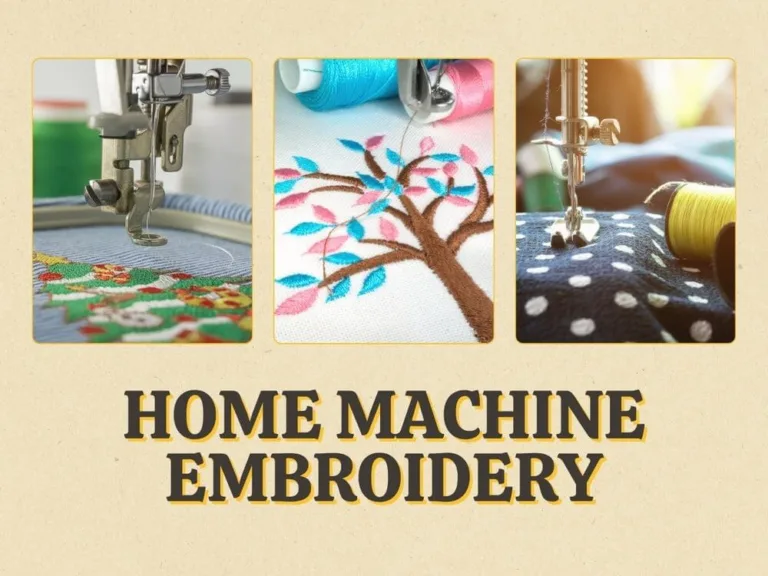
Family Machine Embroidery
From Manual to High-Tech Machines
Embroidery machines have truly transformed the way we create, blending craftsmanship with technology in the most exciting way. Whether you’re just starting out or running a full-fledged embroidery business, there’s a machine out there tailored to your needs.
Entry-Level Machines
Ideal for beginners, these compact machines are user-friendly and come equipped with a small selection of built-in designs and essential functions. They’re a great way to get comfortable with machine embroidery without feeling overwhelmed. I love how approachable they are—perfect for learning the basics without a steep learning curve.
Mid-Range Machines
These models strike a great balance between functionality and affordability. With larger embroidery areas, USB ports for importing custom designs, and more advanced editing options, they offer plenty of creative freedom. Personally, I think this is the perfect tier for serious hobbyists—it’s where convenience meets creativity.
High-End Machines
These are the powerhouses of the embroidery world. Designed for professionals or passionate makers, high-end machines boast features like multiple needles for multicolor stitching, auto thread cutters, and integration with sophisticated software. While the investment is significant, the time-saving capabilities and design precision make them invaluable for those producing work at scale.
No matter where you are in your embroidery journey, there’s a machine that fits both your needs and your ambitions.
Embroidery Machine Must-Haves
Your embroidery machine might be the centerpiece of your setup, but it needs the right supporting tools to truly shine. Here are the must-have supplies that will keep your machine humming and your projects looking their best:
Machine-Specific Hoops
Unlike hand embroidery hoops, machine hoops are engineered for precision. They must align perfectly with your machine to avoid misalignment or stitching errors. Always use hoops made specifically for your machine model—you’ll save yourself a lot of headaches (and fabric).
Embroidery Threads Made for Machines
Machine embroidery threads are built to handle high-speed stitching. Polyester offers incredible strength and colorfastness, while rayon brings a rich sheen that gives your designs a luxurious finish. Trust me—using the right thread makes a world of difference in both performance and final appearance.
Stabilizers and Backing
Think of stabilizers as the unsung heroes behind every great stitch. They give your fabric the support it needs to handle detailed embroidery. You’ll find a wide range—tear-away for quick removal, cut-away for extra durability, and even water-soluble for delicate projects. Each has its own strength, so it’s worth trying out different types to see what best suits your style.
Digitizing Software
While technically a tool, not a supply, digitizing software is essential if you want to create your own designs. It transforms artwork into machine-readable files. Yes, there’s a bit of a learning curve—but once you get the hang of it, your design possibilities are nearly endless.
With these essentials in your toolkit, your embroidery machine becomes more than just a piece of equipment—it becomes a creative powerhouse.
Get Started with Embroidery
Start Slow, Build Smart
Think of embroidery as a journey, not a race. Begin with high-quality versions of the basic tools we’ve covered. Mastering the essentials will lay a solid foundation for everything you create down the line.
As you gain experience, you’ll start to notice your own preferences emerging—whether it’s a favorite thread type, a go-to fabric, or a signature technique. This is where your unique style begins to take shape.
Explore, but Stay True to Yourself
Experimentation is part of the fun. Try new tools and materials when curiosity strikes—but remember, just because something is trending doesn’t mean it’s the right fit for you. Stay open, but authentic.
And when you’re ready to showcase your creativity, why not do it in style?
Celebrate You with Custom Apparel
Make your big day even more memorable with a personalized birthday sweatshirt that reflects your vibe. Our Birthday Hoodies & Sweatshirts combine warmth, comfort, and festive flair—perfect for those cozy evening celebrations with friends and family.
FAQs About Embroidery Tools and Materials
1. Which fabric should a beginner start with?
I’d suggest going with even-weave options like Aida. They’re beginner-friendly because the uniform grid makes it easy to follow patterns and count stitches accurately.
2. Should I choose hand embroidery or machine embroidery?
That really comes down to what suits you best. Hand embroidery offers a meditative, artistic process, while machine embroidery is faster and great for complex designs. Try both and see which one clicks with your style.
3. How much should a beginner spend on embroidery tools?
It’s wise to invest in durable, basic tools at first. Once you get a better sense of what techniques and styles you enjoy, you can slowly build up your toolkit with more advanced gear.
4. Is regular sewing thread okay for embroidery?
Technically, you could use it, but it’s not ideal. Embroidery threads are crafted for color consistency, durability, and texture. They’re designed to handle the specific demands of embroidery work.
5. What’s the best way to pick the right needle size?
Match the needle size to your fabric and thread. It should glide through the material smoothly without stretching the fabric or leaving large holes—just enough room for the thread to pass cleanly.

Sophia Williams
Meet Sophia Williams, the 26-year-old wordsmith behind RevoGuy LLC's heartwarming content. This self-taught writer turned her passion for family stories into a career, weaving tales of love and laughter from her bustling Wyoming home office. With six years in the content creation world, Sophia has mastered the art of making Gen X and millennials alike misty-eyed over their morning coffee. When she's not crafting the perfect emotional hook, you'll find her attempting DIY projects or coaching little league. Her gift-giving advice is significantly more reliable than her home improvement skills.
Recent Posts
Recent Comments
Archives
Categories
Categories
- Accessories (3)
- Christmas's Day (13)
- Custom Product (55)
- Halloween (5)
- Women (36)
- Sweatshirts & Hoodies (62)
Hottest Deals
-
Sale Product on sale
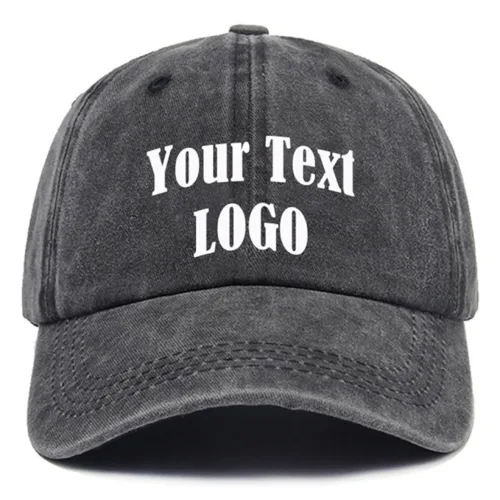 Personalized Embroidered Hat, Custom Text, Custom Logo, Custom Your Image
Personalized Embroidered Hat, Custom Text, Custom Logo, Custom Your Image$33.00Original price was: $33.00.$27.00Current price is: $27.00. -
Sale Product on sale
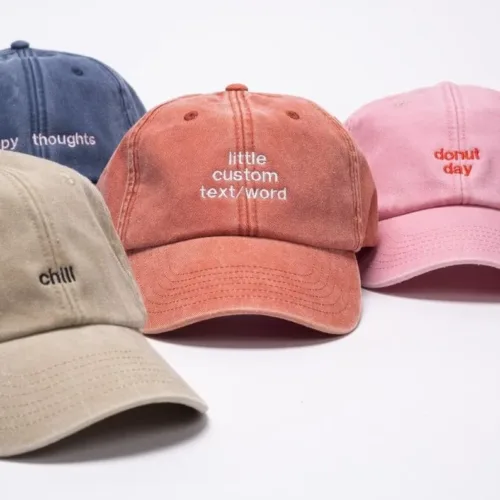 Personalised Vintage Cap - Custom Embroidered Unisex Cotton Dad Hat with Personalized Text
Personalised Vintage Cap - Custom Embroidered Unisex Cotton Dad Hat with Personalized Text$14.00Original price was: $14.00.$12.00Current price is: $12.00. -
Sale Product on sale
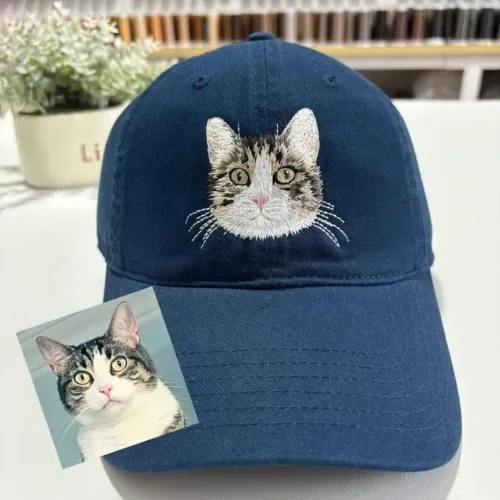 Personalized Embroidered Cat Hat, Custom Dog Hat, Custom Hat Vintage Baseball
Personalized Embroidered Cat Hat, Custom Dog Hat, Custom Hat Vintage Baseball$33.00Original price was: $33.00.$27.00Current price is: $27.00. -
Sale Product on sale
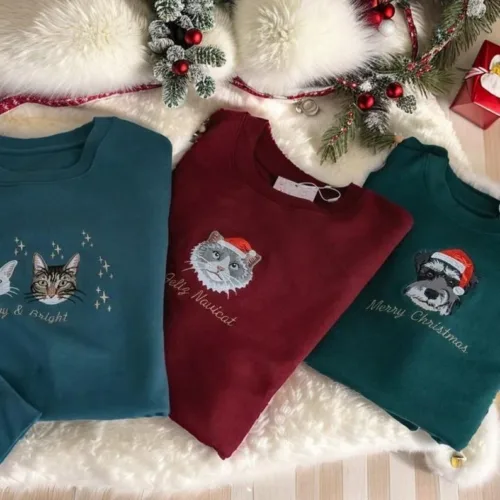 Christmas Edition Custom Pet Portrait Embroidered Sweatshirt$29.00 – $45.00Price range: $29.00 through $45.00
Christmas Edition Custom Pet Portrait Embroidered Sweatshirt$29.00 – $45.00Price range: $29.00 through $45.00

